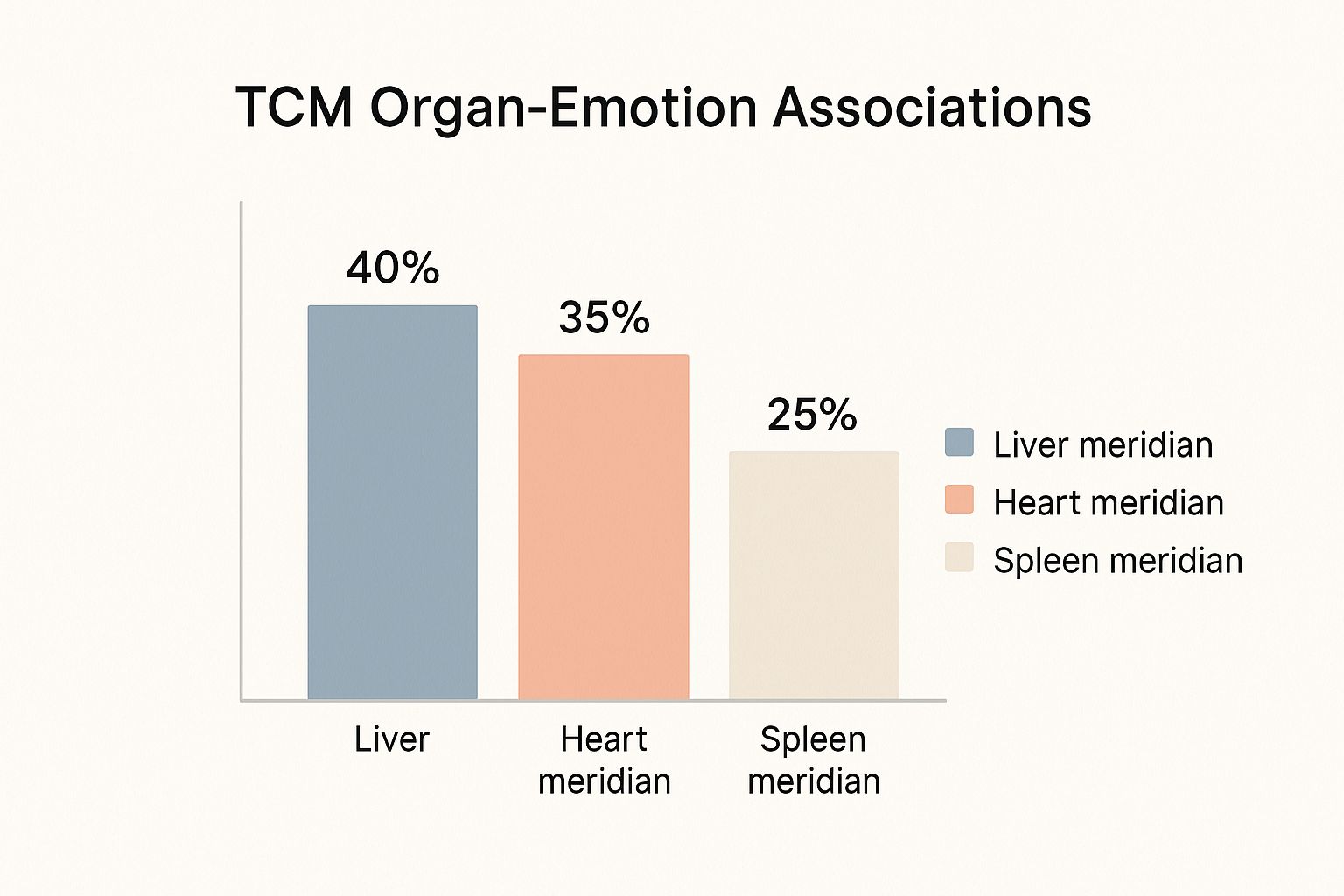Mastering Crisis Management: Strategies for Effective Leadership
Maintaining Composure During Crises: The unpredictable nature of crises can catch us off guard, leading to significant disruptions in our everyday lives and environments. Whether it’s a devastating natural disaster such as an earthquake in Japan or a financial catastrophe reminiscent of the 2008 recession, recognizing the defining characteristics of a crisis is essential for effective management. By delving into the complexities of these situations, both individuals and organizations can improve their ability to remain calm during crises. This skill is crucial for successfully navigating through challenging circumstances.
Understanding a crisis goes beyond simply identifying an event; it necessitates evaluating the overall repercussions on standard operations. For instance, during Hurricane Katrina, vast communities faced displacement, highlighting the multifaceted nature of crises that affect not only physical infrastructure but also the emotional and psychological well-being of individuals and families. The psychological ramifications of crises can be overwhelming, with heightened stress and anxiety clouding judgment and decision-making capacities. This underscores the need for a calm and structured approach to crisis management to effectively address these challenges.
Crises manifest in various forms, including natural disasters, health emergencies, economic downturns, and personal crises such as grief or trauma. Each scenario demands a unique response strategy tailored to its specific nature. For example, the COVID-19 pandemic required an entirely different approach compared to a financial crisis, with a focus on public health measures taking precedence over economic recovery strategies. Grasping these diverse types of crises is vital for effective preparation and response.
The emotional burden imposed by crises can leave individuals feeling powerless or despondent. Acknowledging these emotional impacts is crucial for fostering resilience and empowering individuals to make informed decisions. This emphasizes the importance of preparation. Crafting a comprehensive crisis management strategy, conducting regular training, and ensuring that response teams are well-equipped can significantly improve outcomes when crises occur.
By understanding the complexities of crises, both individuals and organizations can build frameworks that prioritize immediate responses while also focusing on long-term recovery. This understanding serves as a cornerstone for strategic planning, aiming not only to manage the current crisis but also to emerge from it more robust and resilient than before.
Comprehending What Defines a Crisis
The term crisis encompasses a diverse range of unforeseen events that disrupt normal operations and necessitate immediate intervention. Conversations surrounding crises often refer to situations that challenge our typical ways of life, frequently resulting in substantial emotional and physical upheaval. A prime example is found in natural disasters, which can transform thriving communities into chaotic scenes in a matter of moments.
Crises are rarely isolated incidents; they often trigger broader issues that affect entire populations. For instance, the 2008 financial crisis led to widespread job losses, home foreclosures, and a ripple effect that shifted the economic landscape for years. Understanding this definition and the wider implications of crises empowers both individuals and organizations to navigate uncertainty more effectively.
The essence of a crisis also emphasizes the urgent need for immediate action. This may manifest as emergency services responding quickly to natural disasters or businesses implementing contingency plans to address sudden market shifts. The speed of response plays a pivotal role in mitigating the severity of the consequences, making it essential for leaders to adopt a proactive, rather than reactive, approach.
Moreover, crises are characterized by their inherent unpredictability. This uncertainty can amplify feelings of anxiety and tension among those affected. Therefore, maintaining composure and focus is critical in managing the emotional and psychological impacts of a crisis. Developing skills that foster clarity and decisiveness during turbulent times can significantly influence outcomes in crisis management.
Understanding what constitutes a crisis is the foundational step in crafting an effective strategy to tackle it. By clearly defining the crisis, recognizing its potential impacts, and preparing for various scenarios, individuals and organizations can better position themselves to respond when the unexpected occurs.
Identifying the Diverse Types of Crises and Their Impacts
Crises can manifest in numerous forms, each requiring a distinct response strategy tailored to its unique nature. Understanding the various types of crises is essential for effective planning, as the necessary responses differ significantly based on the type of threat. Natural disasters, such as hurricanes, floods, and earthquakes, are among the most visible crises. These events not only jeopardize physical safety but also adversely affect mental health, community cohesion, and economic stability.
For instance, the Australian bushfires of 2019-2020 caused widespread devastation, resulting in significant loss of wildlife, homes, and livelihoods. In this context, the crisis extended beyond the immediate threat of fires to encompass lasting environmental consequences and the psychological strain on affected communities. Recognizing the comprehensive scope of crises aids in developing targeted responses that address both immediate needs and long-term recovery.
Health-related crises, such as the COVID-19 pandemic, represent another significant category, presenting unprecedented global challenges. Public health emergencies necessitate swift actions and transparent communication to manage the spread of disease and ensure community safety. The varied responses among different nations highlighted how cultural and infrastructural contexts influenced crisis management. Countries with established health protocols fared better than those lacking such frameworks, underscoring the importance of preparedness in mitigating health crises.
Economic crises pose another notable threat, as illustrated by the global recession driven by financial mismanagement and market volatility. Economic downturns can lead to job losses, diminished consumer confidence, and decreased business activity. The ramifications of these crises can resonate for years, reshaping the socio-economic landscape of societies.
Finally, personal crises, such as loss or trauma, also warrant attention. These crises can significantly disrupt an individual’s life, often necessitating support systems and mental health resources for recovery. Acknowledging that crises can occur on personal, community, and global levels reinforces the need for a comprehensive understanding of the diverse types of crises that can arise.
Identifying the different types of crises empowers both individuals and organizations to devise comprehensive response strategies tailored to specific threats. By preparing for a broad spectrum of potential crises, we enhance our readiness to tackle whatever challenges the future may hold.
Exploring the Profound Psychological Effects of Crises
The psychological effects of crises can be extensive and deeply felt, impacting not only those directly involved but also entire communities and organizations. During a crisis, individuals frequently experience elevated emotions, including fear, anxiety, and uncertainty. This emotional upheaval can impair decision-making abilities and hinder effective responses to the situation at hand.
Research indicates that stress experienced during crises can lead to various mental health issues, including post-traumatic stress disorder (PTSD), depression, and anxiety disorders. For example, survivors of the 9/11 attacks faced significant psychological distress, with many requiring long-term mental health support. Recognizing this psychological impact is crucial, as effective crisis management must address both logistical responses and emotional well-being.
Moreover, the sense of loss experienced during a crisis can engender feelings of hopelessness. The aftermath of catastrophic events often leaves individuals grappling with grief, whether it pertains to the loss of loved ones, homes, or a sense of normalcy. This emotional fallout necessitates robust support systems to assist individuals in their recovery journeys. Mental health professionals and community organizations play a vital role in providing counseling and support during these challenging periods.
The psychological ramifications of crises can also be exacerbated by social isolation. In the context of the COVID-19 pandemic, social distancing measures, while crucial for public health, resulted in heightened feelings of loneliness and anxiety for many. Recognizing the significance of community and connection is essential in crisis planning, where creating opportunities for social support can alleviate emotional distress.
Ultimately, acknowledging and addressing the psychological impact of crises is vital for nurturing resilience. Encouraging individuals to articulate their emotions and seek help when necessary can facilitate healthier coping mechanisms and a smoother recovery process. By prioritizing mental health alongside logistical response strategies, we pave the way for a more comprehensive and effective approach to crisis management.
Strategic Preparation for Effective Crisis Management
The bedrock of effective crisis management lies in thorough preparation. Crafting a comprehensive crisis management plan that delineates specific actions to be taken during a crisis ensures a structured and coherent response. A well-rounded crisis plan should encompass risk assessments, clear communication strategies, and well-defined roles for team members. By breaking down the plan into actionable components, organizations can facilitate a quicker and more effective response, thereby minimizing chaos during a crisis.
Conducting risk assessments is pivotal in preparation, as they help identify potential vulnerabilities within an organization or community. For instance, a business situated in a flood-prone area must recognize these risks and develop contingency plans accordingly. This proactive approach enables rapid mobilization of resources when disaster strikes, enhancing overall safety and security.
Training and simulation exercises are equally critical, offering individuals and teams opportunities to practice their responses to various crisis scenarios. Regular drills prepare individuals for real-life situations, ensuring they are familiar with their roles and responsibilities. For example, fire drills in schools not only educate students about fire safety but also help them maintain calm and focus during actual emergencies.
Moreover, establishing a robust support network is vital in crisis preparation. This includes creating effective communication channels among team members and fostering connections with external resources, such as emergency services and mental health professionals. A well-connected support network can provide critical assistance during crises, ranging from logistical support to emotional reassurance.
Effective preparation necessitates a multifaceted approach that combines risk assessment, training, and networking. By prioritizing these elements, individuals and organizations can enhance their readiness and resilience, equipping them to manage any crisis that may arise.
Techniques for Maintaining Composure During Crises
During times of crisis, the ability to remain composed can significantly influence outcomes. Staying calm amidst chaos allows individuals to think clearly, make informed decisions, and effectively lead others. Developing techniques to manage stress and anxiety is essential for successfully navigating crises, ensuring that individuals can respond thoughtfully rather than impulsively.
One of the most effective strategies for reducing stress and maintaining focus during a crisis is through the use of breathing techniques. Deep breathing exercises, such as the 4-7-8 technique, can lower heart rates and promote a sense of calm. This straightforward yet powerful practice can be performed anywhere—whether in a boardroom or amid a disaster zone—enabling individuals to regain control over their emotions and mental state.
Mindfulness and meditation practices further enhance this calmness. By concentrating on the present moment, individuals can quell racing thoughts and anxiety. Organizations can incorporate mindfulness training into their crisis preparedness plans, encouraging employees to practice these techniques regularly. In high-pressure situations, those who have developed mindfulness skills tend to respond more thoughtfully rather than reactively.
Another vital strategy for maintaining calm is positive self-talk. During crises, individuals may encounter negative thoughts that can undermine their confidence. By practicing positive affirmations and focusing on their strengths, individuals can bolster their resilience and ability to cope with challenges. For example, reminding oneself of previous successes can foster a sense of control and capability during turbulent times.
Developing these techniques requires consistent effort and regular practice. Individuals might consider weaving breathing exercises, mindfulness, and self-affirmation into their daily routines, establishing a foundation for resilience that can be tapped into during crises. When calmness prevails, it not only benefits the individual but also sets a positive tone for others, creating a ripple effect of composure that strengthens collective response efforts.
Maintaining calm during crises is not an instinctive ability for most individuals; rather, it is a skill that can be cultivated and refined over time. By embracing techniques such as breathing exercises, mindfulness practices, and positive self-talk, individuals can empower themselves to navigate crises with poise and confidence.
Utilizing Breathing Techniques for Stress Management
Breathing techniques are powerful tools for managing stress and anxiety, especially in high-pressure situations. When faced with a crisis, our bodies instinctively react, often triggering a fight-or-flight response. This physiological reaction can lead to rapid heart rates, shallow breathing, and heightened anxiety. By consciously controlling our breath, we can counteract these effects and regain a sense of calm and clarity.
The 4-7-8 breathing technique is particularly effective. This method involves inhaling for four seconds, holding the breath for seven seconds, and exhaling slowly over eight seconds. Practicing this technique can help individuals lower their heart rates and promote tranquility. Research indicates that controlled breathing can effectively reduce stress and anxiety levels, making it an invaluable strategy during crises.
Another beneficial method is diaphragmatic breathing, which focuses on engaging the diaphragm for deeper breaths. This technique not only relaxes the body but also increases oxygen flow to the brain, enhancing clarity and decision-making. For instance, first responders often utilize these breathing techniques before entering chaotic environments to ensure they remain focused and composed despite the surrounding chaos.
Incorporating breathing techniques into crisis management training can significantly enhance individual and team preparedness. Organizations can conduct workshops that teach these methods, equipping employees with the necessary tools to manage stress efficiently. Providing resources, such as guided breathing exercises available via mobile applications, can further encourage individuals to practice these techniques regularly.
Ultimately, mastering breathing techniques empowers individuals to maintain composure during crises. By taking a moment to concentrate on their breath, individuals can transform anxiety into calmness, facilitating clearer thinking and more effective responses when faced with unforeseen challenges.
Embracing Mindfulness and Meditation for Enhanced Calm
Mindfulness and meditation have emerged as vital practices for maintaining calm during crises. These techniques encourage individuals to focus on the present moment, enabling them to navigate the anxiety and panic that often accompany high-stress situations. By cultivating awareness and acceptance, individuals can bolster their resilience in the face of adversity.
The practice of mindfulness involves being fully present and engaged in the current moment, without judgment. This can be achieved through various techniques, such as mindful breathing, body scans, or merely observing one’s thoughts and feelings. Research indicates that regular mindfulness practice can reduce stress levels, enhance emotional regulation, and improve overall well-being. For instance, healthcare professionals increasingly implement mindfulness-based interventions to manage the psychological stress associated with their work, particularly during crises like the COVID-19 pandemic.
Conversely, meditation provides a structured approach to mindfulness. Techniques such as guided imagery or focused attention help individuals develop a calm and centered mindset. Regular meditation practice can lead to lasting changes in brain function, resulting in heightened emotional resilience. Many individuals find that dedicating just a few minutes each day to meditation significantly improves their ability to cope during crises.
Integrating mindfulness and meditation into crisis management training creates a strategic advantage for organizations. Providing employees with the tools to practice these techniques empowers them to respond more effectively during crises. Organizations can offer mindfulness workshops, access to meditation apps, or create designated quiet spaces for employees to engage in these practices throughout the workday.
The benefits of mindfulness and meditation extend beyond the individual, positively impacting entire teams and organizations. When team members approach crises with a calm and focused mindset, they can communicate more effectively, make sound decisions, and collaborate seamlessly. By cultivating a culture of mindfulness, organizations can enhance their overall crisis preparedness and response capabilities.
In summary, mindfulness and meditation serve as powerful tools for maintaining composure during crises. By integrating these practices into daily routines, individuals can build resilience, improve emotional regulation, and enhance their ability to navigate challenges effectively.
The Transformative Impact of Positive Self-Talk During Crises
Positive self-talk is a transformative practice that can significantly influence how individuals navigate crises. The internal dialogue we maintain shapes our perceptions, emotions, and ultimately our responses to challenging situations. During a crisis, negative thoughts can proliferate, leading to feelings of helplessness and anxiety. By consciously engaging in positive self-talk, individuals can counter these adverse thought patterns and cultivate resilience.
The power of affirmation lies in its ability to reshape self-perception. Encouraging oneself with statements like “I can handle this” or “I possess the skills necessary to overcome this challenge” can foster a sense of confidence and control. Research suggests that self-affirmations activate brain areas associated with self-related processing and reward, reinforcing positive feelings and enhancing performance under pressure.
Utilizing positive self-talk during crises can help individuals maintain a growth mindset—the belief that challenges can serve as opportunities for learning and personal development. For example, athletes often employ self-affirmations to boost their confidence before competitions, reminding themselves of past successes and their capabilities. This mental preparation not only enhances performance but also helps them remain calm and focused amidst intense pressure.
Organizations can promote positive self-talk by fostering a supportive environment that encourages open communication and collaboration. Leaders can model positive self-talk and affirmations, creating a culture where team members feel empowered to uplift one another. Furthermore, workshops that teach techniques for cultivating positive self-talk can equip individuals with the skills necessary to navigate crises more effectively.
By prioritizing positive self-talk, individuals can enhance their emotional resilience and ability to cope with crises. This internal dialogue serves as a powerful tool for transforming anxiety into confidence, enabling individuals to respond thoughtfully and effectively when faced with unexpected challenges.
Ensuring Clear Communication During Crises
Effective communication is paramount during crises. The ability to convey information clearly can significantly influence how individuals and organizations navigate turbulent situations. Misinformation can spread rapidly during a crisis, leading to confusion and chaos. Establishing a communication strategy that prioritizes clarity is crucial for maintaining order and ensuring that everyone comprehends the situation.
Concise and straightforward messaging is vital for effective communication. When crises unfold, it is imperative to provide information that is clear and easy to understand. This includes outlining the nature of the crisis, associated risks, and the measures being implemented to address the situation. For instance, during natural disasters, emergency services frequently employ simple, direct language in public announcements to ensure that communities grasp evacuation procedures and safety measures.
Active listening also plays a crucial role during times of crisis. Engaging with individuals’ concerns builds trust and encourages open dialogue. By actively listening to team members or community members, leaders can address specific issues and provide reassurance, which is essential for maintaining morale. Acknowledging and validating emotions can help individuals feel supported and empowered, making it easier for them to follow directives during stressful times.
Utilizing technology as a communication tool can enhance coordination and information dissemination during crises. Digital platforms, such as social media, messaging apps, and mobile alerts, can facilitate real-time communication. For example, during the COVID-19 pandemic, health organizations leveraged social media to share updates, guidelines, and educational resources, reaching global audiences quickly and effectively.
Additionally, organizations might consider developing a crisis communication plan that outlines protocols for disseminating information during emergencies. This plan should encompass designated communication roles, media strategies, and messaging templates to ensure consistency and clarity. By being prepared with a communication strategy, individuals and organizations can navigate crises with confidence, fostering cooperation and collaboration among all stakeholders involved.
Effective communication is a cornerstone of crisis management. By prioritizing clear messaging, active listening, and leveraging technology, individuals and organizations can enhance their ability to respond effectively during crises, ensuring that everyone remains informed and engaged throughout the process.
Crafting Clear and Actionable Messaging
During crises, the importance of clear and actionable messaging cannot be overstated. Individuals and organizations must convey information in a manner that is easily understood and actionable. Misinformation can escalate quickly, leading to panic and confusion; therefore, it is critical to provide accurate updates that effectively address the situation.
The first step in crafting clear messaging is identifying the core message that needs to be communicated. This involves distilling complex information into straightforward statements that can be easily grasped. For instance, during a natural disaster, emergency management officials must deliver clear instructions on evacuation routes, safety protocols, and available resources. Utilizing simple language and avoiding jargon can significantly enhance comprehension.
Moreover, employing multiple communication channels can amplify the reach of messages. Organizations can utilize social media, email, text alerts, and traditional media to ensure that critical information reaches diverse audiences. Consistency across these channels is also essential; messages should align in tone and content to avoid confusion. For example, public health organizations often use coordinated messaging across various platforms to disseminate information regarding health guidelines or emergencies.
Visual aids, such as infographics or charts, can further enhance clarity and understanding. These tools simplify complex data, providing immediate insights into the situation. For example, during the COVID-19 pandemic, visual representations of infection rates and safety guidelines helped individuals quickly grasp the urgency of the situation.
In summary, clear and actionable messaging is essential during crises. By focusing on the core message, utilizing multiple communication channels, and incorporating visual aids, individuals and organizations can ensure that critical information is effectively communicated, reducing confusion and fostering a sense of security among stakeholders.
The Importance of Active Listening
Active listening serves as a powerful communication tool, especially during crises. Engaging with individuals’ concerns fosters trust and cultivates an environment where open dialogue can thrive. In times of uncertainty, individuals often feel anxious, and being heard can significantly alleviate their distress.
The practice of active listening involves fully focusing on the speaker, demonstrating understanding, and responding thoughtfully and effectively. This means setting aside distractions and genuinely engaging with the concerns being raised. For instance, during a crisis, team leaders should strive to listen to their team members’ fears and suggestions, validating their emotions and reinforcing that their input is valued.
Effective active listening can also involve summarizing what has been said to ensure comprehension. This technique not only clarifies any misunderstandings but also shows the speaker that their concerns have been taken seriously. For example, a manager addressing a team during a crisis might say, “I hear your safety concerns, and I want to assure you that we are taking every measure to protect everyone.”
Moreover, incorporating feedback loops can enhance the effectiveness of communication during crises. Encouraging individuals to share their thoughts and questions can lead to valuable insights that inform decision-making. This two-way communication fosters a culture of collaboration and support, which is critical in navigating challenging situations.
Organizations can also offer training on active listening techniques, helping employees develop these crucial skills. By prioritizing active listening, teams can enhance their collective ability to respond to crises effectively, ensuring that everyone feels heard and supported.
In a crisis, effective communication through active listening can bridge gaps, build trust, and foster resilience within teams. By creating an environment where individuals feel safe to express their concerns, organizations can harness the collective strength of their people to navigate crises more effectively.
Leveraging Technology for Effective Communication
Technology plays a pivotal role in enhancing communication during crises. The rapid dissemination of information is critical for effective crisis management, and digital tools offer unique solutions to keep individuals informed and engaged. During emergencies, the ability to communicate in real-time can significantly impact the safety and well-being of communities.
Social media platforms have emerged as powerful tools for communication during times of crisis. Organizations can utilize these platforms to share updates, safety information, and resources swiftly. For example, during natural disasters, emergency services often rely on social media to provide real-time information about evacuation routes, shelter locations, and safety guidelines. This immediate access to information can be lifesaving for individuals in affected areas.
Messaging apps, such as WhatsApp or Slack, facilitate rapid communication among team members during a crisis. These platforms allow for instant updates and coordination, ensuring that everyone remains informed and aligned. By creating dedicated channels for crisis communication, organizations can streamline their response efforts, minimizing confusion and enhancing collaboration.
Mobile applications can also be leveraged for crisis management, offering features such as emergency alerts, resource directories, and real-time updates. For instance, during the COVID-19 pandemic, many countries developed apps to track infection rates, provide health guidelines, and facilitate contact tracing. These tools empowered individuals to take informed actions in response to the evolving situation.
Furthermore, organizations can implement a crisis communication plan that outlines how technology will be utilized to disseminate information. This plan should include protocols for selecting communication platforms, defining roles for team members, and ensuring that messages are consistent across channels. By being prepared to leverage technology, organizations can enhance their crisis response capabilities and foster a sense of security among stakeholders.
In summary, utilizing technology for communication is essential in crisis management. By harnessing the power of social media, messaging apps, and mobile applications, individuals and organizations can ensure that critical information is disseminated quickly and effectively, ultimately enhancing safety and response efforts during crises.
Exemplifying Leadership During Crises
Exemplary leadership is a cornerstone of successful crisis management. Leaders play a crucial role in guiding individuals and organizations through tumultuous times, and their actions can have a profound impact on outcomes. During a crisis, traits such as decisiveness, empathy, and adaptability are essential for leaders, fostering resilience and cooperation among their teams.
Decisive action is paramount during crises, as leaders must make swift, informed decisions to navigate challenges effectively. This requires not only a clear understanding of the situation but also the ability to assess risks and consequences. For example, during the COVID-19 pandemic, leaders in healthcare and government had to make rapid decisions regarding lockdowns, resource allocation, and public health policies. Their ability to act decisively can significantly influence the effectiveness of the response and the well-being of the community.
Empathy and support are also critical components of effective leadership during crises. When individuals face uncertainty and fear, leaders who demonstrate understanding and compassion can foster a sense of security within their teams. For instance, leaders who openly acknowledge the emotional toll of a crisis and provide support resources can help alleviate anxiety and promote resilience. This empathetic approach not only strengthens team morale but also enhances collaboration and trust among team members.
Moreover, adaptability and flexibility are vital traits for leaders during crises. The unpredictable nature of crises often requires leaders to adjust strategies as situations evolve. For instance, during the 2008 financial crisis, businesses had to pivot their strategies to survive, often resulting in innovative solutions. Leaders who embrace change and encourage their teams to think creatively can navigate challenges more effectively, fostering a culture of resilience and innovation.
Training and development programs focused on leadership skills in crisis management can empower individuals to lead effectively during turbulent times. By prioritizing decisive decision-making, empathy, and adaptability, organizations can cultivate a cadre of well-equipped leaders to guide their teams through crises.
In summary, leadership during crises is characterized by decisive action, empathy, and adaptability. By embodying these traits, leaders can inspire confidence, foster collaboration, and effectively navigate challenges, ultimately enhancing organizational resilience in the face of adversity.
The Critical Importance of Decisive Action
Decisive action is the hallmark of effective leadership in times of crisis. When confronted with unexpected challenges, leaders must swiftly assess the situation and make informed decisions that guide their teams through turmoil. The ability to act decisively can significantly influence crisis outcomes, impacting both immediate responses and long-term recovery efforts.
In high-stakes situations, hesitation can escalate risks and confusion. For example, during natural disasters like hurricanes, timely decisions regarding evacuation routes and resource allocation can save lives and minimize damage. Leaders must rapidly gather relevant information and collaborate with their teams to formulate actionable plans. This requires a keen understanding of the crisis at hand and its potential impacts on individuals and communities.
Moreover, effective leaders prioritize transparent communication while making decisions. By articulating the rationale behind their choices clearly, leaders can foster trust and encourage buy-in from their teams. For instance, during the COVID-19 pandemic, leaders who communicated the science behind public health guidelines were more successful in garnering public compliance and support.
Additionally, leaders must be prepared to adjust their strategies in response to emerging information. The dynamic nature of crises often necessitates flexibility, requiring them to alter their approaches swiftly. For instance, organizations can benefit from conducting regular assessments of their crisis response plans, allowing them to identify areas for improvement and update strategies as necessary.
Training programs focused on decision-making during crises can equip leaders with the skills needed to navigate complex situations. By fostering a culture that emphasizes decisiveness, organizations can build resilience and ensure that leaders are prepared to act effectively when challenges arise.
Ultimately, decisive action is vital for effective crisis management. Leaders who make informed decisions and communicate transparently can guide their teams through adversity, fostering a sense of security and confidence as they navigate the complexities of crises.
Empathy and Support in Crisis Leadership
Empathy and support are fundamental aspects of leadership during crises, providing a foundation for resilience and collaboration. In times of uncertainty, individuals may experience heightened anxiety, fear, and emotional turmoil. Leaders who demonstrate empathy can create a supportive environment that fosters trust and encourages open communication, ultimately enhancing crisis response efforts.
When leaders openly acknowledge the emotional challenges faced by their teams, they validate individual experiences and foster a sense of belonging. For instance, during the COVID-19 pandemic, many employees faced anxiety regarding their health and job security. Leaders who took the time to check in with their teams, listen to their concerns, and provide reassurance demonstrated empathy and support, which bolstered morale during a challenging time.
Furthermore, providing resources for mental health and well-being is crucial in supporting individuals during crises. Organizations can offer access to counseling services, wellness programs, and peer support networks to help employees navigate their emotions. Such initiatives not only promote psychological well-being but also reinforce the message that leadership cares about the holistic health of their teams.
Empathy in leadership also involves transparency about uncertainties. Leaders who communicate openly about the challenges their organizations face can foster a culture of honesty and collaboration. By sharing information and involving team members in decision-making processes, leaders can enhance feelings of empowerment and collective ownership, leading to more effective crisis responses.
Training programs focused on developing emotional intelligence in leaders can enhance their ability to demonstrate empathy and support. By fostering a culture of understanding and compassion, organizations can cultivate resilient teams capable of navigating crises effectively.
Ultimately, empathy and support are essential for effective leadership during crises. Leaders who prioritize the emotional well-being of their teams can foster trust, enhance collaboration, and create a resilient organizational culture that thrives even in the face of adversity.
Embracing Flexibility and Adaptability in Leadership
Flexibility and adaptability are critical traits for leaders navigating crises. The unpredictable nature of crises often demands a willingness to adjust strategies and approaches in response to evolving circumstances. Leaders who embrace change and foster a culture of adaptability can enhance their organizations’ resilience, enabling them to navigate challenges effectively.
In times of crisis, rigid adherence to established plans can hinder progress. Instead, leaders must be prepared to pivot, re-evaluate priorities, and explore innovative solutions. For instance, during the COVID-19 pandemic, many organizations transitioned to remote work and quickly rethought their operational strategies. Leaders who embraced this change and supported their teams in adapting to new technologies and workflows were more successful in maintaining productivity and morale.
Open communication and collaboration are vital components of adaptability. Leaders should encourage feedback from their teams and involve them in the decision-making process. By actively seeking input from diverse perspectives, leaders can gain valuable insights that inform their strategies and enhance overall effectiveness. This collaborative approach fosters a sense of ownership among team members, increasing their commitment to working together to navigate challenges.
Moreover, training and development programs focused on adaptability can empower leaders and teams to thrive in uncertain environments. Organizations can provide workshops that emphasize creative problem-solving, critical thinking, and resilience-building, equipping individuals with the skills they need to respond effectively to crises.
Leaders should also set an example, demonstrating flexibility in their approaches. When team members observe their leaders embracing change and adapting to new circumstances, they are more likely to adopt a similar mindset. This creates a culture of resilience, where individuals feel empowered to innovate and explore new solutions when faced with challenges.
Ultimately, flexibility and adaptability are crucial for effective leadership during crises. Leaders who welcome change, foster collaboration, and nurture resilience can guide their organizations through uncertainty, ensuring they emerge stronger and more capable of tackling future challenges.
Navigating Recovery After Crises: Key Strategies
Recovery following a crisis is a fundamental aspect of crisis management, involving various strategies aimed at restoring normalcy and fostering resilience. The recovery process can be intricate and multifaceted, requiring careful assessment, emotional support, and the implementation of effective recovery plans. Understanding the intricacies of recovery is crucial for both individuals and organizations to rebuild and emerge stronger following a crisis.
Post-crisis assessment serves as a vital step in the recovery process. Evaluating the response to a crisis helps identify successes and areas for improvement, providing valuable insights that can inform future planning. Organizations should conduct thorough debriefing sessions with teams to discuss what worked well and what could be enhanced. This reflective process fosters a culture of continuous learning and improves preparedness for future crises.
Addressing the emotional toll of a crisis is equally important for long-term recovery. Individuals may grapple with feelings of grief, anxiety, or trauma following a crisis, making mental health support essential. Organizations can implement Employee Assistance Programs (EAPs) that offer counseling services, support groups, and resources to help employees navigate their emotional recovery. Fostering a supportive environment where individuals feel comfortable discussing their feelings can promote healing and resilience.
Building resilience is another critical aspect of recovery. Learning from crises strengthens individuals and organizations, equipping them with invaluable skills and insights for future challenges. Developing contingency plans, enhancing communication strategies, and promoting teamwork are all essential components of resilience-building efforts. By prioritizing resilience, organizations can cultivate a culture that embraces challenges as opportunities for growth and improvement.
Implementing recovery strategies is vital for ensuring a swift return to normalcy. This may involve reestablishing operational processes, rebuilding relationships with stakeholders, and assessing resource needs. Organizations should also consider developing comprehensive recovery plans that outline steps to take in the aftermath of a crisis. By proactively addressing recovery efforts, organizations can mitigate the long-term impacts of crises and position themselves for future success.
In summary, recovering from crises requires a multifaceted approach that encompasses post-crisis assessment, emotional support, resilience-building, and effective implementation of recovery strategies. By prioritizing these components, individuals and organizations can emerge from crises stronger and more resilient, ready to face whatever challenges lie ahead.
Conducting Post-Crisis Assessments for Improvement
Post-crisis assessment plays a crucial role in evaluating the effectiveness of response efforts and identifying areas for improvement. Following a crisis, organizations and individuals must take the time to reflect on their actions, gather feedback, and analyze outcomes. This evaluative process serves as a foundation for learning and growth, ultimately enhancing future crisis preparedness and response.
Conducting thorough debriefing sessions is an essential component of post-crisis assessment. These sessions offer an opportunity for team members to discuss their experiences, share insights, and reflect on the overall response. By encouraging open dialogue, organizations can uncover valuable lessons, both positive and negative, that inform future strategies. For example, a healthcare organization may assess its response to a health crisis, identifying successful practices and areas where communication could be improved.
Moreover, organizations should collect quantitative data to support their assessments. This may include metrics related to response times, resource allocation, and stakeholder engagement. Analyzing this data can yield objective insights into the effectiveness of crisis management efforts, enabling organizations to identify patterns and trends that inform future planning and decision-making.
Engaging external stakeholders in the assessment process can also provide a broader perspective. Collaborating with community members, emergency services, and other organizations can facilitate a comprehensive evaluation of the crisis response. External perspectives can highlight blind spots and offer insights that internal teams may overlook.
By translating the lessons learned into actionable recommendations, organizations can develop more effective crisis management plans. This continuous improvement approach fosters a culture of resilience, ensuring that individuals and organizations are better equipped to face future challenges.
In conclusion, post-crisis assessment is essential for evaluating response efforts and identifying areas for improvement. By conducting thorough evaluations, engaging stakeholders, and translating insights into actionable recommendations, organizations can enhance their crisis management capabilities and foster resilience in the face of adversity.
Supporting Emotional Recovery After Crises
Emotional recovery following a crisis is a vital aspect of the overall recovery process. Crises often leave individuals grappling with feelings of grief, anxiety, and trauma, making it essential to address these emotional tolls to promote long-term well-being. Organizations and individuals must prioritize mental health support to facilitate healing and resilience.
Providing access to mental health resources is crucial during the recovery phase. Organizations can implement Employee Assistance Programs (EAPs) that offer counseling services, support groups, and mental health workshops. These resources help individuals navigate their emotions, process their experiences, and develop coping strategies. Establishing a culture that normalizes seeking help for mental health is vital for promoting emotional recovery.
Additionally, fostering open communication about emotions can help individuals feel validated and supported. Encouraging team members to share their feelings and experiences can create an environment of trust and empathy. Leaders who actively listen and acknowledge the emotional struggles of their team members can instill a sense of connection, fostering resilience within the team.
Furthermore, organizations can promote resilience-building activities that enhance emotional recovery. Initiatives such as mindfulness training, stress management workshops, and team-building exercises can help individuals develop coping skills and strengthen their emotional resilience. These activities not only support recovery but also foster a sense of community and collaboration among team members.
Recognizing that emotional recovery is a process that takes time is crucial. Individuals may experience a range of emotions, and it is essential to provide ongoing support throughout their healing journey. By prioritizing emotional well-being and normalizing discussions around mental health, organizations can create a supportive environment that fosters resilience and empowers individuals to thrive.
In summary, emotional recovery is a critical component of the overall recovery process following a crisis. By providing access to mental health resources, fostering open communication, and promoting resilience-building activities, organizations can support individuals in navigating their emotions and emerging stronger from adversity.
Fostering Resilience Through Effective Crisis Recovery
Building resilience is an essential aspect of recovering from crises, enabling individuals and organizations to navigate challenges and emerge stronger from adversity. Resilience is not merely about bouncing back; it involves developing the capacity to adapt, learn, and thrive in the face of difficulties. By prioritizing resilience-building efforts, individuals and organizations can enhance their preparedness for future crises.
One of the fundamental components of resilience is fostering a growth mindset—an understanding that challenges can serve as opportunities for learning and development. Encouraging individuals to view setbacks as stepping stones toward growth can empower them to embrace challenges with confidence. For example, organizations can share stories of resilience and recovery, highlighting how teams have overcome obstacles and emerged stronger, further reinforcing the belief in their capabilities.
Training programs focused on resilience-building can provide individuals with valuable skills and tools to navigate crises effectively. Workshops on stress management, emotional intelligence, and problem-solving can equip individuals with the necessary resources to respond to challenges with confidence. By investing in these development opportunities, organizations can cultivate a culture of resilience that enhances their overall crisis preparedness and response.
Moreover, fostering strong support networks is essential for building resilience. Encouraging collaboration and connection among team members creates a sense of community and belonging, enabling individuals to lean on one another during challenging times. Organizations can implement peer support programs, mentorship initiatives, and team-building activities that promote social connections, ultimately enhancing resilience.
Additionally, organizations should regularly assess their crisis management plans to identify areas for improvement. By learning from previous crises and incorporating feedback, organizations can continually enhance their preparedness and response capabilities. This commitment to continuous improvement is a cornerstone of resilience, ensuring that individuals and organizations are better equipped to face future challenges.
In conclusion, building resilience is essential for effectively recovering from crises. By fostering a growth mindset, providing training opportunities, nurturing support networks, and committing to continuous improvement, individuals and organizations can emerge stronger and more capable of navigating the complexities of future challenges.
Implementing Robust Recovery Strategies
Implementing effective recovery strategies is vital for ensuring a swift return to normalcy following a crisis. These strategies encompass a range of actions aimed at rebuilding and restoring operations while addressing the emotional and psychological needs of individuals. A well-structured recovery plan can significantly enhance resilience and promote a sense of stability during turbulent times.
The first step in implementing recovery strategies is to assess the immediate needs of individuals and organizations. This involves identifying critical areas requiring attention, such as resource allocation, communication, and emotional support. For instance, organizations may need to evaluate their operational capabilities, determine the resources necessary for recovery, and identify potential gaps requiring addressing.
Developing a comprehensive recovery plan is crucial for guiding the recovery process. This plan should outline specific actions to be taken, timelines for implementation, and clearly define roles and responsibilities for team members. A well-defined recovery plan provides clarity and direction, ensuring that everyone is aligned in their efforts to rebuild and restore normalcy.
Moreover, effective communication is crucial during the recovery phase. Keeping individuals informed about the recovery process fosters transparency and trust. Regular updates on progress, available resources, and support options can help individuals feel connected and engaged in the recovery efforts. This communication cultivates a sense of community and cooperation, ultimately enhancing the overall recovery process.
Additionally, organizations should prioritize emotional support during the recovery process. Providing access to mental health resources, counseling services, and support groups can help individuals navigate their emotions and process their experiences effectively. Creating a culture that values mental well-being is essential for fostering resilience and promoting overall healing.
Finally, organizations should regularly evaluate their recovery strategies to identify areas for improvement. Gathering feedback from team members and assessing the effectiveness of recovery initiatives can inform future planning and decision-making. This commitment to continuous improvement ensures that organizations are better prepared for future crises and can adapt their strategies as needed.
In summary, implementing effective recovery strategies is crucial for ensuring a swift return to normalcy following a crisis. By assessing immediate needs, developing comprehensive recovery plans, prioritizing communication, providing emotional support, and committing to continuous improvement, individuals and organizations can navigate the recovery process successfully and emerge stronger from adversity.
Extracting Key Insights from Crises
Learning from crises is a vital component of effective crisis management. Insights gained from past experiences can inform future planning and enhance preparedness, ultimately fostering greater resilience. By analyzing past crises, organizations can identify effective strategies, common pitfalls, and opportunities for improvement, ensuring they are better equipped to navigate challenges in the future.
Analyzing past crises involves a thorough examination of the response efforts, outcomes, and lessons learned. This process may include conducting post-crisis assessments, gathering feedback from stakeholders, and reviewing data related to crisis management actions. For example, organizations may analyze their responses to natural disasters, assessing factors such as communication effectiveness, resource allocation, and community engagement.
Implementing lessons learned from past crises is essential for improving future preparedness. Organizations can translate insights gained from previous experiences into actionable recommendations, refining crisis management plans and enhancing response strategies. This iterative process ensures that organizations evolve and adapt in response to new challenges, fostering a culture of continuous improvement.
Furthermore, organizations should prioritize sharing lessons learned with their teams and stakeholders. By creating platforms for knowledge sharing, organizations can disseminate valuable insights and best practices, encouraging collaboration and collective learning. This may include hosting workshops, webinars, or discussions that focus on crisis management techniques and strategies.
Additionally, organizations can benefit from engaging with external experts and stakeholders to gain diverse perspectives on crisis management. Collaborating with community organizations, emergency services, and academic institutions can provide valuable insights and enhance overall preparedness. This collaborative approach fosters resilience by leveraging the collective knowledge and expertise of various stakeholders.
In summary, learning from crises is essential for effective crisis management. By analyzing past experiences, implementing lessons learned, sharing knowledge, and engaging with external partners, organizations can enhance their preparedness and response capabilities, ultimately fostering resilience in the face of future challenges.
Thoroughly Analyzing Previous Crisis Responses
Analyzing past crises is a crucial step in enhancing future crisis management efforts. By reflecting on previous experiences, organizations and individuals can identify patterns, assess the effectiveness of their responses, and uncover valuable lessons. This evaluative process serves as a foundation for continuous improvement and building resilience.
The analysis of past crises typically involves a combination of qualitative and quantitative assessments. Qualitative assessments may include gathering feedback from team members, stakeholders, and community members regarding their experiences during the crisis. This feedback offers insights into the perceived strengths and weaknesses of the response, highlighting areas for improvement.
Quantitative assessments often involve analyzing data related to the crisis response, such as resource allocation, response times, and communication effectiveness. For instance, an organization may review data on the number of resources deployed during a natural disaster and assess how quickly they reached affected areas. By examining this data, organizations can identify trends and make informed decisions for future crisis management.
Furthermore, organizations should consider conducting case studies of significant past crises. These case studies can offer in-depth analyses of response efforts, key decisions made, and the outcomes achieved. By documenting these case studies, organizations can create valuable resources that inform future crisis preparedness efforts.
Engaging external experts and stakeholders in the analysis process can also enhance the depth of insights gained. Collaborating with researchers, community organizations, and emergency management professionals can provide fresh perspectives and best practices that inform future planning. This collaborative approach ensures that organizations benefit from a diverse range of insights and expertise.
In conclusion, analyzing past crises is essential for enhancing future crisis management efforts. By combining qualitative and quantitative assessments, conducting case studies, and engaging external experts, organizations can gain valuable insights that inform their preparedness and response strategies, ultimately fostering resilience in the face of future challenges.
Effectively Implementing Lessons Learned
Implementing lessons learned from past crises is vital for improving future crisis management efforts. The insights gained from analyzing previous experiences can inform strategic planning, enhance preparedness, and foster resilience. By translating these lessons into actionable recommendations, organizations can create more effective crisis management plans that are better equipped to navigate uncertainty.
The first step in implementing lessons learned is to ensure they are documented and communicated effectively within the organization. This may involve creating detailed reports or presentations that outline key findings, best practices, and areas for improvement. By disseminating this information, organizations can foster a culture of continuous learning and ensure that all stakeholders are informed and engaged in the process.
In addition, organizations should prioritize integrating lessons learned into their crisis management training programs. By incorporating real-life examples and case studies into training sessions, individuals can gain a deeper understanding of the practical applications of these lessons. This experiential learning approach enhances engagement and equips team members with the skills needed to respond effectively during crises.
Moreover, organizations should regularly review and update their crisis management plans based on the insights gained from past experiences. This iterative process ensures that plans remain relevant and effective in the face of evolving challenges. Organizations may consider conducting annual reviews of their crisis management plans to assess their effectiveness and make necessary adjustments.
Engaging stakeholders in the implementation process can also enhance the effectiveness of lessons learned. By involving team members, community organizations, and external experts in discussions about past experiences and future planning, organizations can benefit from diverse perspectives and insights. This collaborative approach fosters a sense of ownership and commitment among stakeholders, ultimately enhancing the overall effectiveness of crisis management efforts.
In summary, implementing lessons learned from past crises is essential for improving future crisis management efforts. By documenting insights, integrating lessons into training programs, regularly reviewing crisis management plans, and engaging stakeholders, organizations can enhance their preparedness and response capabilities, ultimately fostering resilience in the face of future challenges.
Cultivating a Culture of Continuous Improvement
Continuous improvement is a fundamental principle in effective crisis management, emphasizing the need for organizations to evolve and adapt in response to changing circumstances. The insights gained from analyzing past crises and implementing lessons learned provide a foundation for ongoing growth and development. By prioritizing continuous improvement, organizations can enhance their crisis management capabilities and foster resilience.
One of the key components of continuous improvement is regularly reviewing and updating crisis management plans. Organizations should conduct periodic assessments to evaluate the effectiveness of their plans, taking into account new developments, emerging threats, and changing organizational needs. This proactive approach ensures that crisis management strategies remain relevant and effective in the face of evolving challenges.
Engaging stakeholders in the continuous improvement process is essential. By fostering a culture of feedback and collaboration, organizations can benefit from diverse perspectives and insights. Encouraging team members to share their experiences, suggestions, and concerns can lead to valuable innovations and enhancements in crisis management practices.
Training and development programs should also prioritize continuous improvement. Organizations can provide ongoing training opportunities that focus on emerging trends, best practices, and innovative techniques in crisis management. By equipping individuals with the latest knowledge and skills, organizations can enhance their overall preparedness and response capabilities.
Moreover, organizations should establish mechanisms for documenting and sharing best practices and lessons learned. Creating a centralized repository for crisis management resources can facilitate knowledge sharing and promote a culture of continuous learning. This repository can include case studies, toolkits, and training materials that support ongoing development efforts.
In conclusion, continuous improvement is a vital principle in effective crisis management. By regularly reviewing crisis management plans, engaging stakeholders, prioritizing ongoing training, and creating mechanisms for knowledge sharing, organizations can enhance their preparedness and response capabilities, ultimately fostering resilience in the face of future challenges.
Frequently Asked Questions (FAQs)
What are the essential components of a comprehensive crisis management plan?
A comprehensive crisis management plan incorporates risk assessments, clear communication strategies, defined roles for team members, and actionable steps for crisis response and recovery, ensuring all bases are covered during a crisis.
How can individuals effectively maintain calm during a crisis?
Engaging in breathing techniques, practicing mindfulness, and utilizing positive self-talk can help individuals manage stress and maintain a sense of calm in high-pressure situations, which is crucial for effective crisis navigation.
What role does effective communication play in crisis management?
Clear and concise communication is essential for ensuring that individuals understand the situation, are aware of their roles, and can take appropriate actions during a crisis to minimize confusion and foster cooperation.
Why is empathy important in crisis leadership?
Empathy fosters trust and encourages open communication, creating a supportive environment that enhances team morale and cooperation during crises, which is essential for effective crisis management.
How can organizations support emotional recovery following a crisis?
Organizations can provide access to mental health resources, support groups, and counseling services to help individuals navigate their emotions and promote healing, thereby fostering resilience in the aftermath of a crisis.
What are the benefits of analyzing past crises?
Analyzing past crises helps organizations identify effective strategies, common pitfalls, and opportunities for improvement, ultimately informing future planning and enhancing preparedness for potential challenges.
How can technology enhance communication during crises?
Technology facilitates rapid communication, enabling organizations to disseminate critical information through platforms like social media, messaging apps, and mobile alerts, ensuring timely and effective communication during crises.
What is the significance of building resilience in crisis management?
Building resilience equips individuals and organizations with the capacity to adapt, learn, and thrive in the face of challenges, ultimately enhancing their preparedness and ability to respond to future crises.
How can leaders demonstrate adaptability during a crisis?
Leaders can exhibit adaptability by being open to changing strategies, seeking input from their teams, and modifying plans based on evolving circumstances, which is crucial for effective crisis response.
What steps can organizations take to ensure continuous improvement in crisis management?
Organizations can regularly review crisis management plans, engage stakeholders for feedback, prioritize ongoing training, and document best practices to foster a culture of continuous improvement and enhance overall crisis response capabilities.
The post Staying Calm in Crises: Universal Strategies for Peace appeared first on Survival Bite.


























